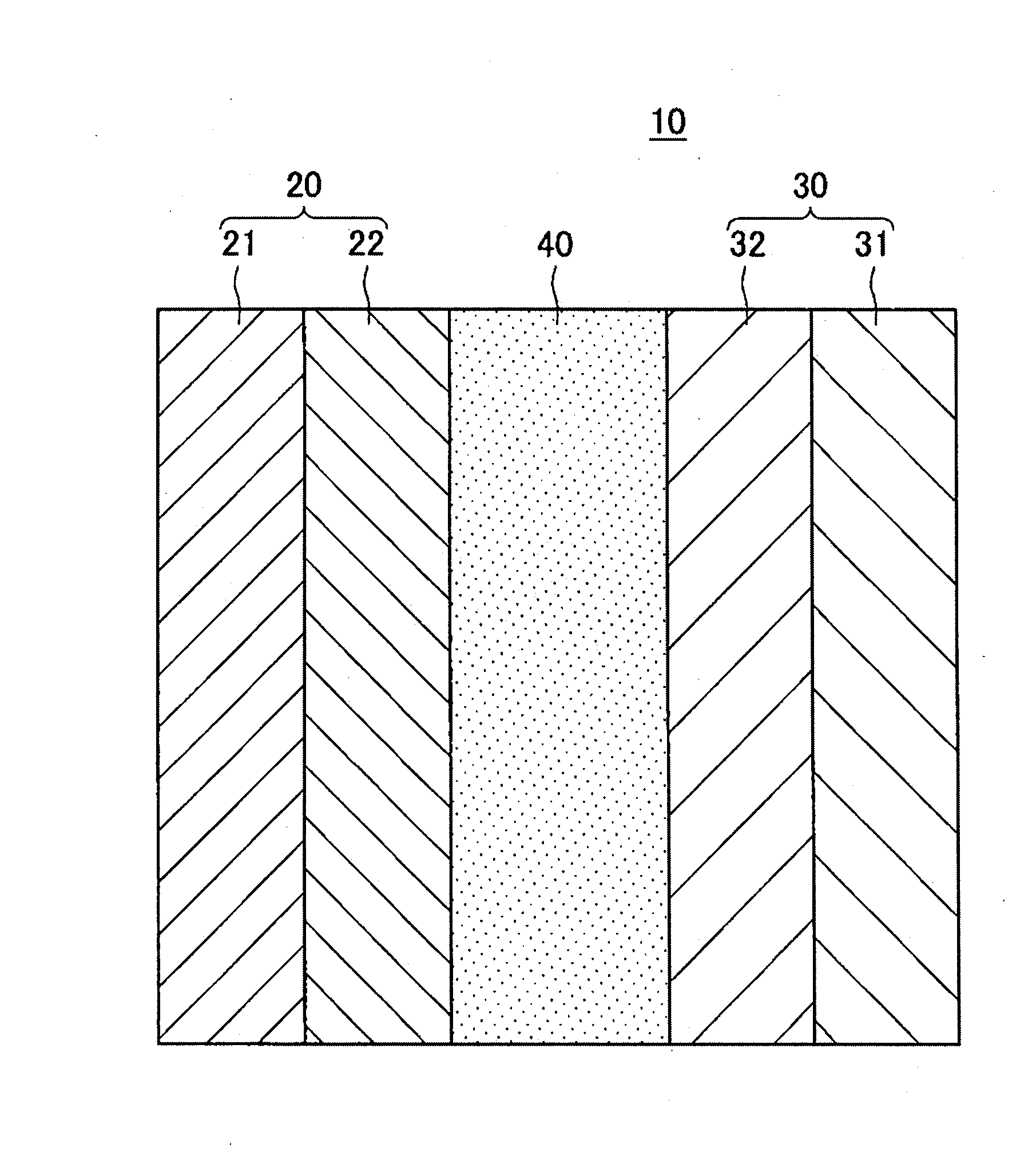Rechargeable lithium ion battery
a lithium ion battery and rechargeable technology, applied in the field of rechargeable lithium ion batteries, can solve the problems of generating a large amount of gas, deteriorating battery characteristics, increasing internal resistance, etc., and achieve excellent battery characteristics and ensure thermal stability
- Summary
- Abstract
- Description
- Claims
- Application Information
AI Technical Summary
Benefits of technology
Problems solved by technology
Method used
Image
Examples
example 1
[0092]A rechargeable lithium ion battery cell according to Example 1 was manufactured according to the following method.
[0093]First of all, 98 parts by weight of LiNi0.6Co0.2Mn0.2O2, 1 part by weight of polyvinylidene fluoride and 1 part by weight of carbon black were dispersed into N-methyl-2-pyrrolidone, forming a slurry. Subsequently, the slurry was coated on an aluminum thin film current collector and dried to form a positive active material layer to manufacture a positive electrode.
[0094]Next, 98 parts part by weight of artificial graphite, 1 part by weight of styrene butadiene rubber, and 1 part by weight of carboxylmethyl cellulose were dispersed into N-methyl-2-pyrrolidone, forming a slurry. Subsequently, the slurry was coated on an aluminum foil current collector and dried to form a negative active material layer, manufacturing a negative electrode.
[0095]In addition, a porous polyethylene film as a separator (having a thickness of 12 μm) was interposed between the positive ...
PUM
| Property | Measurement | Unit |
|---|---|---|
| total weight | aaaaa | aaaaa |
| temperature | aaaaa | aaaaa |
| thermal stability | aaaaa | aaaaa |
Abstract
Description
Claims
Application Information
 Login to View More
Login to View More - R&D
- Intellectual Property
- Life Sciences
- Materials
- Tech Scout
- Unparalleled Data Quality
- Higher Quality Content
- 60% Fewer Hallucinations
Browse by: Latest US Patents, China's latest patents, Technical Efficacy Thesaurus, Application Domain, Technology Topic, Popular Technical Reports.
© 2025 PatSnap. All rights reserved.Legal|Privacy policy|Modern Slavery Act Transparency Statement|Sitemap|About US| Contact US: help@patsnap.com



